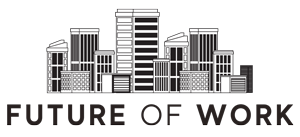The pandemic changed the world of work as we knew it and proved it was possible to pivot under unprecedented circumstances.
One of the biggest shifts was the mass move to remote working, with 44% of people now working from home or hybrid working, according to the latest ONS data. But despite changing where we work, many businesses failed to reinvent how we work, falling back into old routines. This rigid approach, alongside a challenging economic backdrop, has left many people overworked and experiencing stress. This burden is most keenly felt among first-line leaders, who typically directly manage the majority of the workforce at the same time as juggling their own deliverables.
In this article, Susan Binnersley, Managing Director of h2h, considers how we got here and how creative thinking among the HR community might be the answer to avoiding a deeper crisis.
How did we get here?
Direct workers are the lifeblood of any workforce; particularly so within manufacturing and engineering sectors, where they fulfil operational roles that keep businesses running. This group of workers were especially vital to the economy during the pandemic, when key workers such as machine operatives and engineers kept the wheels in motion – often quite literally – while others were ordered to work from home. Direct workers tend to form the biggest percentage of the workforce and they are managed by first-line leaders.
In an organisation that follows a hierarchical structure, first-line leaders are responsible for the first level of supervision and they typically manage around 80% of the workforce. They are also often balancing their managerial responsibilities as well as delivering their own direct work. For the most part, they are highly engaged individuals who have been promoted to their first leadership role due to their competency in their current direct role. One of the greatest challenges they face is making the shift from doing direct work themselves to achieving results through others.
The management duties of first-line leaders range from day-to-day HR responsibilities such as approving holidays and reporting absence, to ensuring employees are following the correct health and safety procedures. Increasingly, they are also being asked to manage staff wellbeing and to support their teams through all stages of the employee life cycle. They are doing this while juggling their own deliverables and they are being asked to work harder and more efficiently than ever, at a time when the UK is seeing the highest levels of sickness absence for over 20 years.
The scale of the problem
According to a report of nearly 18,000 global employees, Gen Z (those born since 1997) are the most stressed, with 52% of respondents in this age bracket saying they experienced stress at work, while 46% of millennials (those born between 1981 and 1996) also said they were stressed, with the proportion of stressed workers decreasing with age. This understandably has an impact on the wider workforce. A US study found that four in 10 employees felt “stress or anxiety about going to work” due to a first-time manager, more than a third lacked motivation, and one in five had trouble sleeping as a result. According to Gartner, 70% of managers are experiencing overwhelm, while 45% of HR leaders in the same research said their employees are fatigued from the continuous disruption of the last several years.
Clearly there is a problem, and with first-line leaders managing the largest proportion of the workforce, they are likely to be feeling the stress most keenly. However, this also presents a huge opportunity for HR leaders. If they are able to get it right with first-line leaders, they have the power to transform the entire organisation. The following three steps can enable creative thinking and set you on the right path to positive change.
Take a fresh approach to first line leader development
I have been supporting the growth of first line leaders for more than three decades working in the industry. A fresh approach to leadership is now urgently needed that helps to address some of the aforementioned challenges and is needed more than ever in the post-pandemic workplace. It follows some basic principles which HR leaders can adapt to suit the particular needs of their organisations, and which are especially relevant for first-line leaders.
HR teams should reconsider the approach to learning and development that first-line leaders are on. In many organisations, this is an automated programme that feeds generic new modules to managers at timely intervals, often as a tick-box exercise. This might be done with the best of intentions, as a way to constantly upskill managers and ensure they are progressing on a path to greater capability and future promotion, but a more nuanced approach is far more effective.
Instead of a constant stream of development, at h2h we are advocating the following:
- Relevant bite-size learning should be accessed on-demand and when it is needed
- Learning interventions should be tailored for the specific organisation and operational context
- Organisations should research and identify the fundamental pivotal and underpinning behavioural skills that enable leadership proficiency in their place of work and develop these in modules that build on skills and suit the specific needs of that individual.
These skills should be deployed with frequent feedback from their managers and peers to continue development. A tailored approach to learning should save precious time for the individual and ensures they can focus on developing the area that is most needed at that particular moment. The aim here is for them to become a master of fewer pivotal skills, which they can deploy with confidence and with a constructive mindset.
Consider the art of the possible and redesign operational roles
Another key principle is to introduce true flexibility by redesigning the workplace to suit the needs of today. While the wider economy has benefitted from flexibility in hours and location in recent years, direct workers and first-line leaders in manufacturing and engineering roles have all too often been overlooked. Of course, complete remote working is not an option for many operational teams, but greater flexibility and efficiency can be achieved by looking at the bigger picture of the workplace as a whole, across multiple teams.
For example, there might be an entire team dedicated to operational excellence, staffed by individuals who are fully desk-based and who lack hands-on experience. What if operational workers were asked to take on some of these responsibilities alongside their roles, in exchange for fewer hours spent doing operational tasks? This redesign could mean four days of working on-site, with one day reserved for operational excellence responsibilities that can be completed remotely by the people who know the business – and know how to achieve excellence – better than anyone.
Tackle the ‘busyness’ pandemic
When I ask people in the world of work how they are, one of the first words I normally hear is ‘busy’. When they then describe their ‘busy’ world it inevitably includes back to back meetings (some online and some face to face). The dialogue generally infers busy rather than effective and also infers overwhelm as the only time they can think clearly is beyond normal working hours. Also of concern is that direct leadership of their teams is often neglected leading to less effectiveness at that level as well. This needs to be addressed urgently.
The following tips could help organisations to tackle busyness:
- Re-imagine meetings and collaboration, consider what needs to be achieved and what sort of interaction would actually be most effective, and whether an interaction is actually needed
- Rather than fearing AI, lean into it and use it to attack the admin and protect deep work and collaboration time
- Encourage leaders to take command of their own day and probe their diary – are they really needed? What’s their contribution? What’s the value add? What are their real priorities? If you are triple booked, something is seriously wrong!
A complete redesign of the workplace might sound daunting, but considering the art of the possible and thinking differently works equally well on a small scale. Taking a subsection of the workforce – whether that’s a single team, one particular geographical location or a sample pool of individuals who are open to trying new things – can be a great way to test the theory. I would urge HR leaders to adopt a creative mindset and try something new. The results could not only address the stresses of overburdened first-line leaders, but they could prove transformational to the business as a whole.

Susan Binnersley is the Managing Director and founder of h2h, an organisational development consultancy founded in 2004 and based in York. Susan has more than 30 years’ experience in industry and consulting, particularly in the engineering sector and was one of the first female Directors at BAE Systems, where she started her career in the late 1980s.
Susan works with businesses across all sectors to provide services including: people strategy, organisation design and development, leadership development, outplacement, coaching and internal career transitions. As a result of the bespoke services provided by h2h, businesses are better placed to achieve commercial advantage through strong ethical leadership and engaged, committed and high performing teams.






